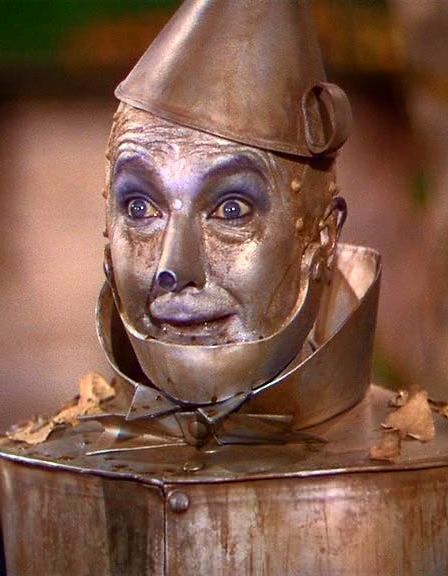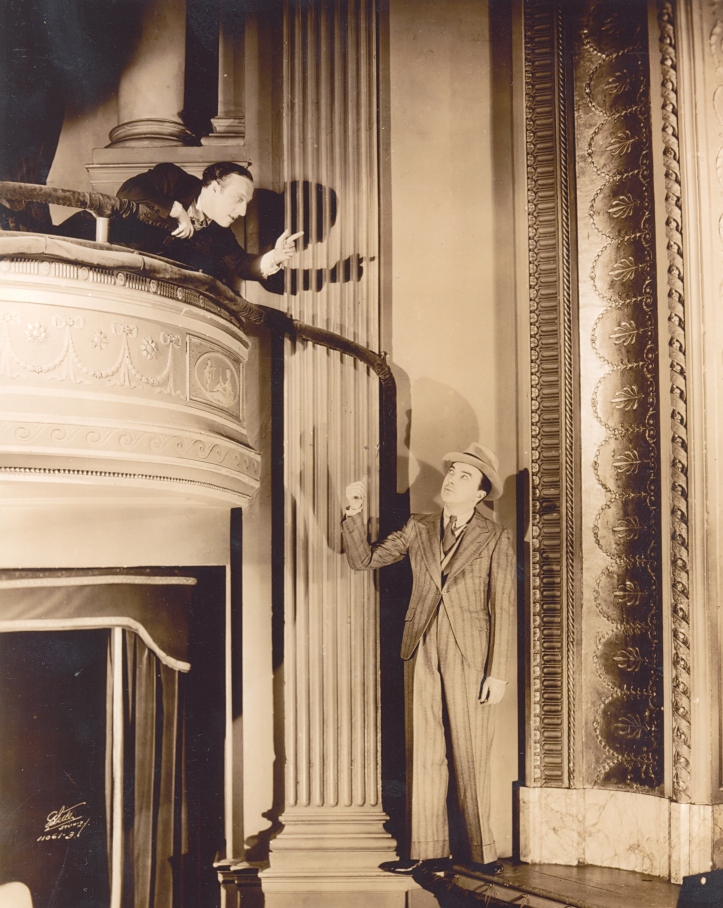The great unsung hero of the 1939 film version of The Wizard of Oz is Jack Haley (the Tin Man). When children are asked their favorite character from the film, they will usually choose Judy Garland, the star; Ray Bolger, because of his crazy leg-o-mania; or Bert Lahr, because of his broad comical antics. In later interviews about the picture, Haley always seemed bitter and angry. This could be one reason why.

The fact was, he played a major role in key aspects of the film, including both Bolger’s and Lahr’s performances. An old musical theatre and vaudeville hand, he devised the acting style employed by both himself and Bolger, the breathless, naïve sort of voice one uses when reading a story to a child. He also helped the screenwriters cook up jokes for Lahr, usually plucked from Haley’s grab bag of old vaudeville staples. Above and beyond that, there is Haley’s own comic performance in the film, much subtler than Bolger’s or Lahr’s, but still a delight. Watch the film closely for Haley’s patented double takes. He was famous for that little bit of business in his vaudeville days.
He was born in Boston in a poor Irish family in 1899. His father died six months later. His mother was literally an Irish washerwoman, scrubbing floors to support the family. He started out, as many did, as a song plugger, at $25 a week. By his own admission, he was terrible at it. He then got a job in a tab musical written to occupy Bayonne Whipple (of Whipple and Huston) while Walter Huston appeared in George White’s Scandals. His first vaudeville success was with a partner named Charlie Crafts, telling jokes and singing and dancing. The pair worked the small time for six months, and by 1924 debuted at the Palace. The team went over big. Haley made his first line a dismissive “So—this is the Palace” (as though it were a dump) and got an explosion of laughter at the top of their act. From there it was smooth sailing. That pop-eyed double-take became Haley’s trademark. Haley was to become a regular headliner at the Palace in its later years, even serving as Master of Ceremonies. Straight man Crafts was replaced in the mid-20s by a woman named Helen Eby Rock.

He began starring in musicals and revues in the mid-20s, such as Gay Paree (1925), and Follow Thru (29). The latter picture provided his entrée into pictures, as it transferred to celluloid in 1930. By his own account, he appeared in 50 films through mid 40s, most of them now forgotten B pictures and shorts. One of course, is a major classic.

From 1937 through 1939, Haley had his own national radio show sponsored by Wonder Bread. Putting bread on the table – and not using too much butter – had always been his principal concern. “Acting was a job”, he one said, “and money was my prime motivation.” When he was no longer commanding those $3,000 a week salaries, he made a choice almost unheard of among big time showfolk: he went into the real estate business. He flourished in that line until he passed in 1979. (Interesting footnote: his son, Jack Haley Jr became a successful movie producer and was briefly married to Judy Garland’s daughter Liza Minnelli)
To find out more about vaudeville and stars like Jack Haley, consult No Applause, Just Throw Money: The Book That Made Vaudeville Famous


Jack was my favorite character in Oz when I became a teen! He was so subtle and romantic…that can be the reason.
LikeLike
[…] Wizard of Oz. Almost all of the major cast members were vaudeville veterans: Bert Lahr, Ray Bolger, Jack Haley, Charley Grapewyn (Uncle Henry) and Singer’s Midgets. Judy Garland, 16 at the time of her […]
LikeLike
[…] 1930, he was an M.C. at the Palace. In 1932, he formed a sort of loose team with Jack Haley co-hosting at the Palace. This and a couple of early talkies were the summit of his success. He had […]
LikeLike